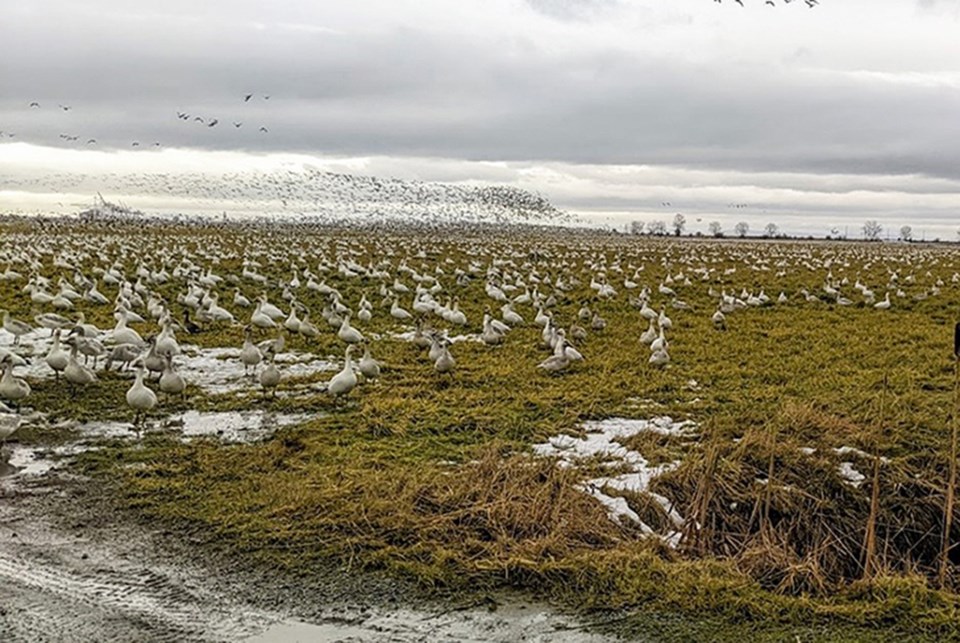During 2021/22, the Delta Farmland & Wildlife Trust partnered with local farmers to plant 3,938 acres of winter cover crops and 90 acres of grassland set-asides, in addition to 350 acres of already existing set-aside fields throughout Delta and Richmond.
We completed surveys throughout the winter and spring to assess the impact of stewardship programs and found that they continue to provide benefits to wildlife and farmers.
Delta is considered a top migratory bird site, with approximately five million migratory birds utilizing the Fraser River estuary as a wintering habitat. Cover crop fields provide foraging material for Snow Geese and other migratory waterfowl.
By March 2022, 22 per cent of fields were completely grazed, while 43 per cent of fields were left without any signs of grazing. Less grazing was observed this year compared to last year, where most fields were grazed entirely (60 per cent), and only 16 per cent of fields were not grazed. This was likely due to the series of cold snaps between December 2021 and February 2022, which damaged many cover crops. We found that fields planted with winter cereals, such as fall rye, could handle the cold better and were grazed more; spring cereals, such as barley and oats, were less resilient to the cold and were highly damaged by the end of the season.
But even in cold weather conditions, cover crops continue to provide the same benefits to farmers - such as enhancing soil health, and protecting against erosion.
What are the most common species in Delta's farm fields?
In addition to cover crop surveys, which looked at how fields are grazed through the winter, we completed waterfowl surveys to identify which species are using these fields.
The most common species observed in Delta and south Richmond were Mallards, American Wigeon, and Snow Geese. We also observed strong numbers of Northern Pintail, Trumpeter Swan, and Gadwall. There were fairly low numbers of Snow Geese compared to previous years. The cold winter in Delta could have played a part in this, however, there is always a natural fluctuation in the wintering population of Snow Geese from year to year.
Our Grassland Set-aside Program is also an important component of our research. Through this stewardship program, farmers plant fields with grassland species to improve soil quality and provide habitat for wildlife.
Grasslands are an important habitat for several species at-risk in the area including Barn Owl, Short-eared Owl and Great Blue Heron. We found that grassland set-aside fields in Delta continue to support all three of these species throughout the crucial winter months. One of the major food sources for these species is the Townsend’s Vole, which thrives in grassland meadows.
The Townsend’s Vole also supports many of the raptors that winter in the Delta region. Northern Harriers, Bald Eagles, Rough-legged Hawks, Red-tailed Hawks, and Coopers Hawks were all observed during our raptor survey of grassland set-aside fields.
By administering these stewardship programs and facilitating research projects, we aim to better understand how wildlife utilize farm fields and support farmers in providing wildlife habitat.



